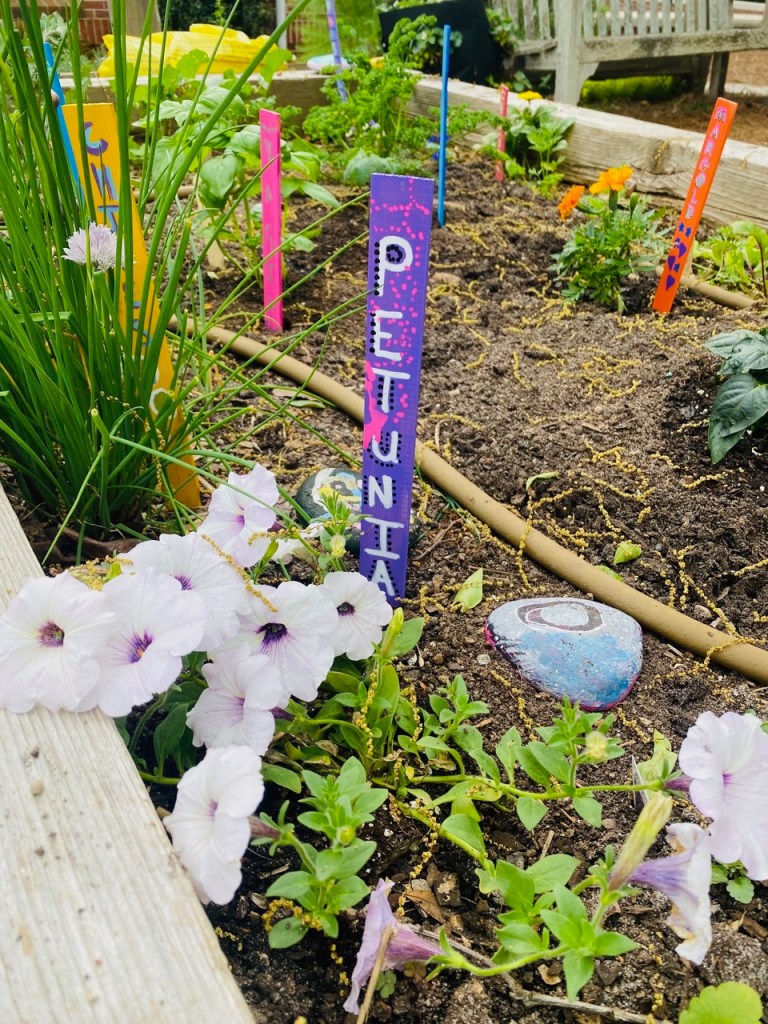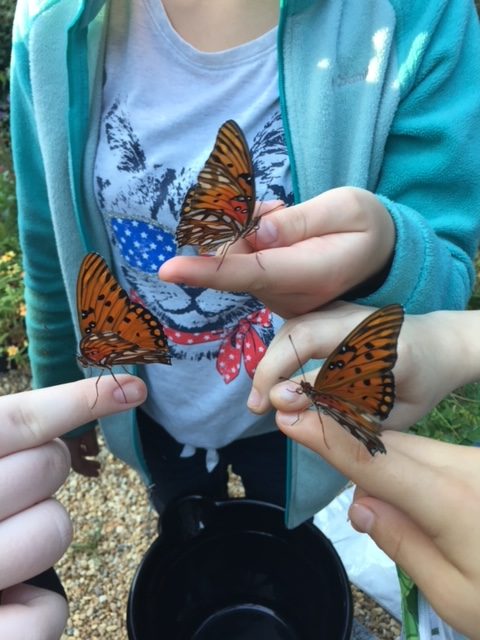
In Georgia, 41 percent of children aged 3-17 “struggle to or are not able to access needed mental health treatment and counseling,” per nonprofit Voices for Georgia’s Children. In May, mental health awareness month, Hillside hosted a Craft Crawl to share its mental health treatment modalities, like horticulture therapy.
Each year, Hillside serves 900+ children aged 6-18 who struggle with emotional and behavioral issues through a continuum of care: residential treatment, day treatment, intensive in-home and virtual group therapy. Its Morningside campus includes seven residential cottages that house 87 clients, an Atlanta Public Schools accredited school building, dining hall, gymnasium, pool, learning gardens and more.
“For residential treatment, we have kids coming from across the nation who struggle with depression, anxiety, suicidal ideation and self-harming behaviors,” said Gabriella Marvin, Hillside Director of Community Engagement and Communication.

Youths stay in the residential program for six to eight weeks and participate in a range of treatment modalities, like horticultural therapy, which uses plants and gardening to promote well-being, healing, and health.
“It’s a huge benefit to the kids,” said Horticultural Therapist Barbara Bohannon, who started the horticulture program in 2015. “It opens their eyes and minds to what’s around them – to how beautiful nature is.”
“We pull carrots out of the soil and they are like – oh my gosh!” Bohannon gushed. “I get so many kids who have never touched a plant or dug in the dirt.”
Each week, Bohannon guides 11 groups through activities including: planting gardens, composting, raising butterflies and more. Together they create gardens that mix vegetables, flowers and pollinators.
In April, the youth picked the remaining fall plants and planted tomatoes, peppers and basil.
“We harvested kale, added salad dressing and ate it,” Bohannon said. “They wanted seconds. A garden teaches you – I might like that.”

The Hillside gardens are also the beneficiary and the inspiration for art projects.
“The kids use paint pens on sticks to label plantings,” Bohannon explained. “It adds color when flowers aren’t blooming yet. Rock painting is huge – they write beautiful messages on them.”
On a windy spring day, Bohannon collected a variety of leaves.
“We learned about which trees the leaves came from: Sweet Gum, Ginkgo and Japanese Maple,” Bohannon said. “We did watercolors with the leaves.” She even led a leaf guessing game that was more fun than a lecture.
From now until October, it’s butterfly time.
“We grow milkweed, passion vine and fennel host plants to attract caterpillars,” Bohannon said. “We put the caterpillars in butterfly houses and give them food that they eat and eat and eat!”
The kids observe the caterpillars’ transition in their science classrooms.
“The monarch butterfly’s chrysalis is green with gold beads,” Bohannon said. “It turns translucent so you can see the butterfly’s wings when it’s about to come out.”
One boy was so fascinated with butterflies that his father made him boxes with a grow light.
“He sent back pictures from home of all the things he was growing for pollinators,” Bohannon recalled. “That to me was really beautiful. I think it gives the kids a sense of purpose and a chance to teach their families or contribute to an activity they can do together.”
For so many youth, gardening is a calming activity that can be shared at Hillside and later with family.
“We give kids plants when they go home – vegetables, flowers or succulents,” Bohannon said. “I think we’ve created quite a few gardeners.”
Hillside welcomes volunteers to work alongside Bohannon and the kids.
“I think potential volunteers might want to remember that kids are kids, everywhere,” said volunteer Lauren Waits, who is pursuing her horticulture therapy certification this fall. “Children and teens who need specialized mental health care are just as interesting, creative and fun to work with as any other group of young people. It’s fun to see their eyes light up when they recognize a familiar plant from home, or when they share a story about something they’ve grown in the garden.”
Donations are also helpful, as insurance doesn’t cover horticulture therapy.
“Everything Ms. Bohannon does with the kids in the garden is consistently one of their favorite memories of Hillside,” Marvin said. “ It’s important to have the funding to keep it going.”
“Nature is the ultimate teacher,” Bohannon said. “It shows you little miracles. We germinate a basil seed in our hands…add a little water and close your hand for warmth. Within a minute they are all fuzzy. They broke that seed coat. It shows how fast change can happen if you have the right conditions. Then we watch the plant grow from that little germinated seed.”

